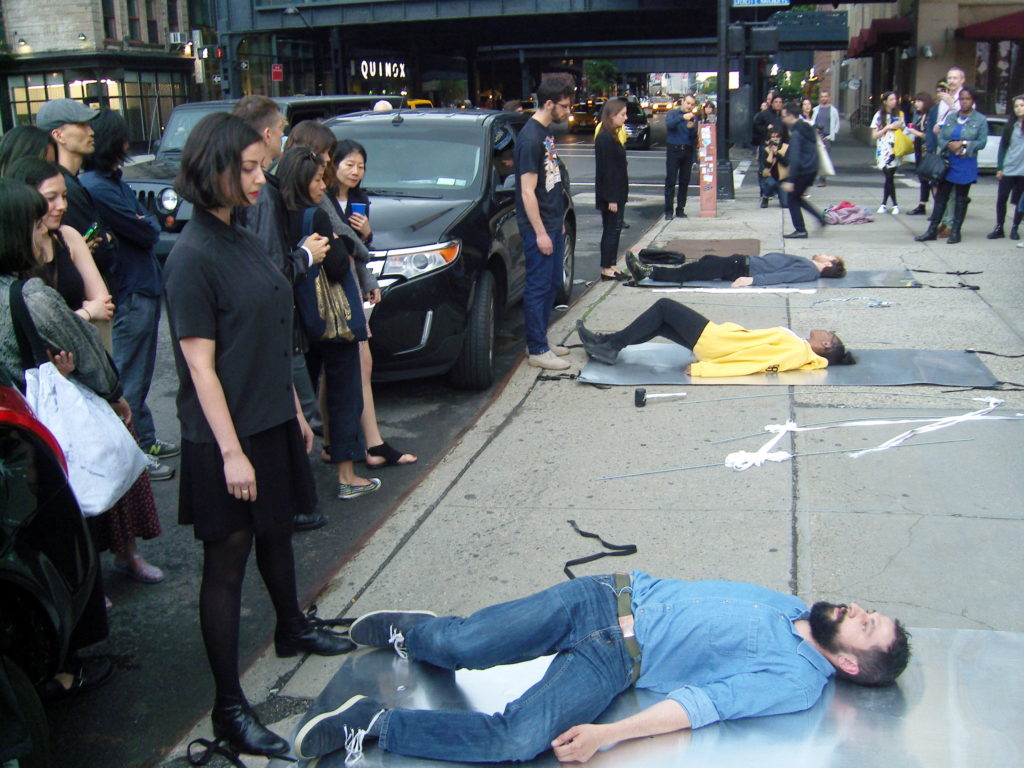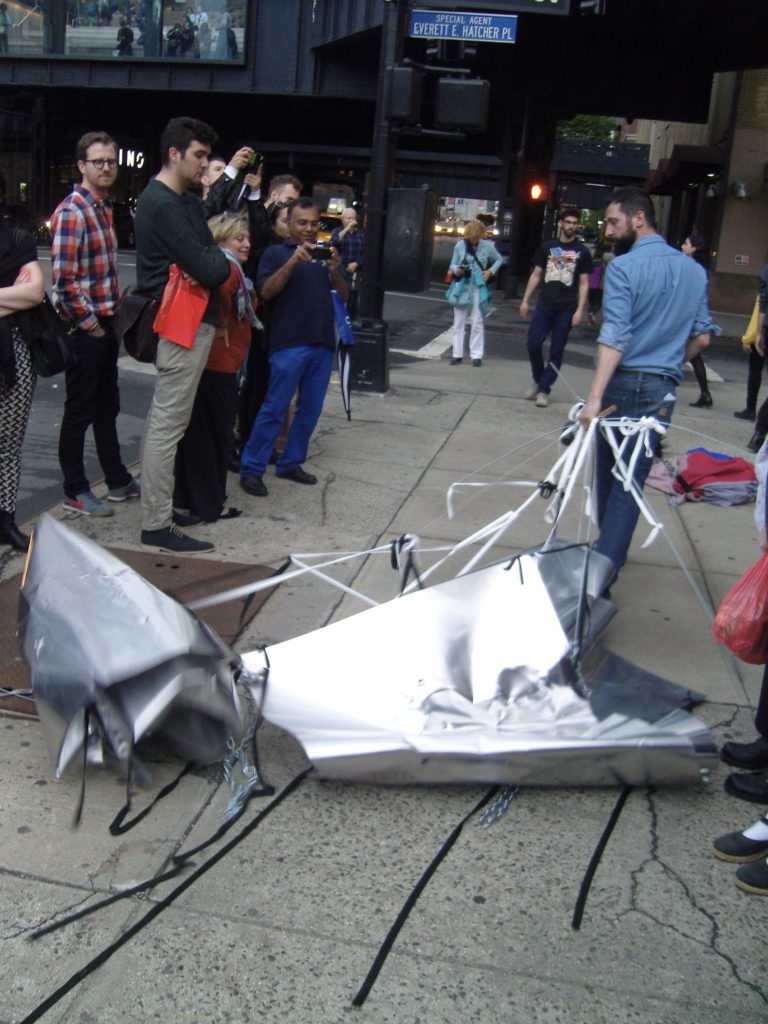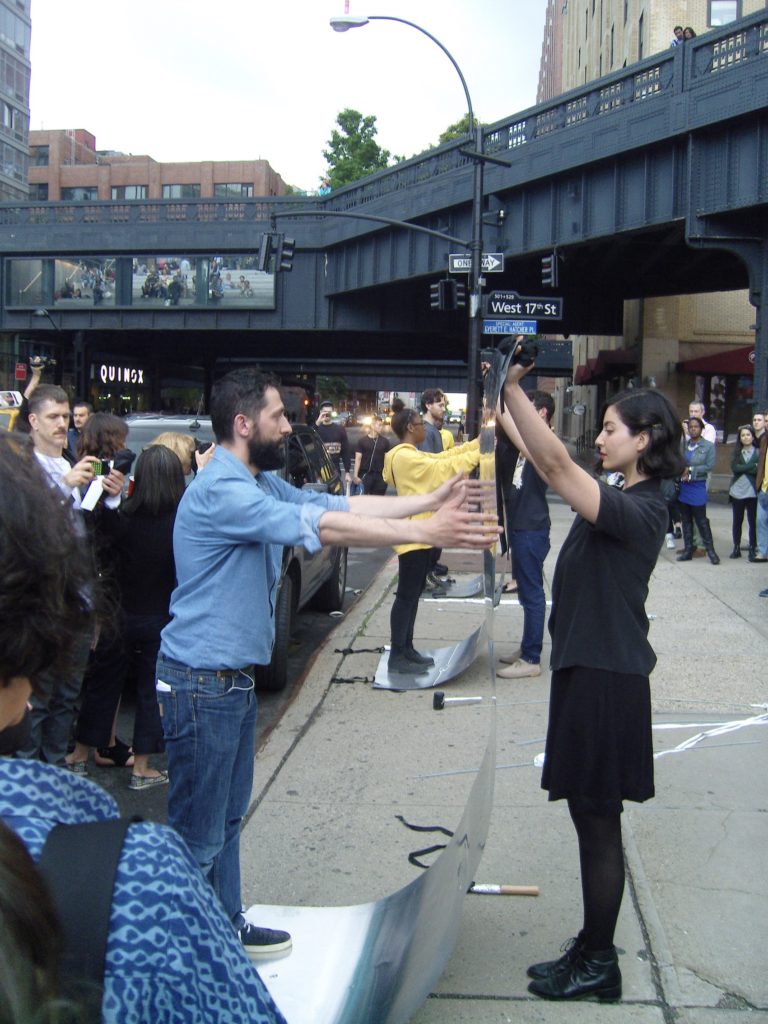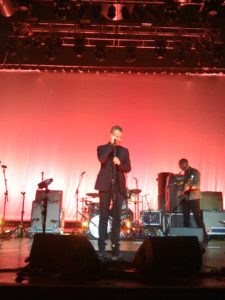
We’re slowly getting out from a very long and severe quarantine in Italy dealing with the Covid-19 emergency, in which we have all been forced to live confined to a domestic dimension (those of us, that is, who are fortunate enough to have a safe place) avoiding more widely shared spaces for our own safety and, we are asked to recognize, for the safety of others, probably for the first time in our lives.
Putting aside the fears and the disorienting feelings that the pandemic has brought with it, the immediate consequence for many was to miss friends, relatives and social life: the familiar normality became suddenly extraordinary. And a sense of the absence of others, and a part of ourselves, was immediately framed by places which were forbidden to us, were closed, spaces which used to describe what we are.
Working places, the usual café or bar where we meet friends, the gym, or even public transport, became important in their being closed to us, they were the scenes for the narrative of our daily lives as they were before, the places where our social being happened. At the same time, in such a patriarchal society as the Italian one ( and I know that I could appear extreme but the politics of the Italian government during this crisis – as well as my life experience! – drives me to assert this here), many women started to feel the loss of the social dimension even more acutely, the loss of the places where they can affirm their presence and their independency, and this is not to speak of the desperate cases where domestic abusive environments that have no escape make impossible even the most simple activities of lockdown life.
We can say that the crisis has made extremely evident what we may suppose to be obvious but which is often lost sight of in a society of confused and clamorous messages of individualistic needs and the seemingly contradictory claim of a diminished social contract: the fact that we’re all social beings in need of sharing spaces.
The distorting perceptions of contemporary society are made more insistent as consumerist demands squeeze out the spaces of human needs. This unique time in which consumption was partially limited as never before in my generation, has made this dynamic incredibly clear: in fact it was not a chance that in China (but even in my city), when the lockdown was over, many people, those who could afford it and those who maybe could not, ran to luxury shops, even clearing the shelves. Many people feeling themselves released from the struggle of the quarantine instead of responding with existential purposes, looked for the easier and immediate feeling of consumer gratification.
It’s not difficult to understand, but something is missed, not everything is returned to the normal of before even though there is a reassurance in familiarity. We cannot know what will have changed after this, for the good or for the bad. Certainly a lot that we may want to change may instead be even further embedded, but equally there will be things that are broken and which cannot be put back together. One of the many ironies of the lockdown is the fact that this almost universally acknowledged act of sharing and of common purpose should have its expression in physical separation and social isolation, enforced separation even from many of those closest to us, and of confinement in one place and exclusion from almost every other place. A solidarity in the face of an existential threat happens at the same time as there is a constant fear of contamination by other people, our neighbors and friends.
This made me think about the way in which art and some artists can show as aspects of contemporary life which are at the point of flux, charged with meanings that have become unstable and unreliable. And, in particular, because so much of our experience in the past months has seen places determined as being forbidden or permitted, closed or open, thinking about artists who have tried to perform the presence and the sometimes unexamined meanings of social spaces .

Very often, in fact, art is seen as something at a distance from everyday life and its problems, and this can be in good way, because it gives space for thought that isn’t trapped by the mundanity of daily routine, or it can be bad because it creates a space of fantasy, an elsewhere, an easy escape from our responsibility to act and to think together with others. These conflicting perceptions have been frequently rehearsed and no less when so much art follows the current fashion of claiming a social dimension that, when examined, appears to be little more than a veneer. Even so there are artists whose engagement and thoughtfulness is evident.
For me one of these is Yorgos Sapountzis who’s work has focused on the way in which we live and relate to streets, monuments, to sharing spaces, and at the same time challenging with this the false limit of the conventions of exhibition spaces.
To explain what I mean I will describe a project he made and which I curated at The Kitchen in New York ” Soft World-Hard World”, (for the exhibition “Common Spaces”, ISP of Whitney Museum) because of the impression that it made on me, not only of the way in which the performance was received by the audience but, most of all, for the feeling of sharing and of sympathy between themselves that the performers had and which they in turn shared with the audience. It was a project born through a conversation and an attention to, and open understanding of, spaces and of the way in which we live them.
A site-specific collective performance in the Chelsea district (the location of The Kitchen) it developed through public workshops with the performers at the West Beth Residents Council. Chelsea, which is now an expensive district in New York, was once a mixed, and sometimes dangerous, neighborhood with a vivid cultural life and The West Beth was a condo created to give homes and studios for artists. Now, it’s an island in the middle of a massive urbanistic expansion with the connected gentrification creating a social break with the past reality, where even if people can still have cheap places to live through guaranteed tenancy and rent laws, they no longer have the local stores, restaurants, bars or cafés that they could afford.
Sapountzis, thoughtful about this rupture – of course not the first – between place, its history, the people who made it, those who stayed, those who passed through, and the incomers of today, imagined a project connecting the transgressive, vivid, past of the area, together with the present streetscape of blue chip galleries and fancy offices and apartments.
The performance set out from and returned to a site specific installation in the exhibition space that included material, like pipes, textiles, found objects and general detritus, brought from the street space, from homes and from workshops. The performers moved along a few blocks from The Kitchen with a collective abstract choreography, replaying the sounds and playing out the movement, meetings, and separations that formed the dynamics of the district. In this they were accompanied by the constant noise of construction, the sound of the work of hundreds of builders as they erected the expensive new condos going up on almost every block and intersection. This sound too was sampled, incorporated in the event, and played back by the performers, almost as a counterpoint to the construction. As if echoing the familiar soundtrack of the place.
It was a project which vigorously challenged the false separation between exhibition space as closed or conditional space – like the privatized spaces that currently proliferate in our cities – and public space. But it also elicited a collective understanding, for the performers and the for audience, of what it means to inhabit and to share public spaces, where the need to be aware of and attentive to what is happening every day around us – in the shaping and reshaping of the place we live, and of history – means to be a public and political actor.
In a way we can think about “Soft World-Hard World” as drawing attention to different and opposing forces which condition and in part determine lives in our cities and, yet more widely, in contemporary society. The human need of sharing and of relation that we may understand and act effectively within, which involves space and time, place in which we have agency and consequence, needs constantly to be acknowledged, cared for, and attended to. It is all the time challenged by the demands of production and consumption. A dynamic that we see in these days so very clearly in the pressure to end lockdown and the calculation of just what constitutes manageable risk.

The sharing spaces that are an essential part of our social being, and individual being, have become more and more limited, and limiting (even without the domestic confinements of the epidemic). When the public and the common has become the place of economic speculation and commodification there needs to be a change in the way that we imagine and understand shared space, and precisely how we take place.
In Chelsea as, generally, in every city, the public is more and more under the attack of urbanistic speculations and is given increasingly limited place. Sapountzis was showing in New York, a centre of capital, the existential need for, and the countervailing will to come to, sharing experience and sharing spaces and the necessity of the consequent collective awareness
And this comes to the point of this blog: Today more even than before, this step is becoming necessary, because it’s time to assert presence, will, and agency, together, in our shared recognitions, without the atomizing distinctions between what is “private” life or “public” life. The fact is that these categories cannot hold, they have already been eroded to the point where they remain only as a convenient front for the operations of a society of capital and consumption.
My proposal is not so scary because we already live lives in which the borders are permeable. We protect nothing by insisting on a distinction that now only serves to separate us. Emerging from lockdown we can come into a world of common good. This is not idealism, it concerns shared and changed perception, a kind of revolution of understanding. And for this, more than ever, art must been seen as a political action – also when it wants to deny any political involvement: because if art is made by people and for people it has always a social purpose, the place where it is formed or displayed is interesting only in practical terms but not in its own meaning. Art takes place between us, in our relation with each other. And in this it is the perfect articulation for coming to understand a new world not of categories and separations, closed spaces and entrenched inequity, but of shared thought.
Very often in my life I have seen people looking to contemporary art as a game for wealthy people, an expensive amusement. But the actuality of it is that it is made by many, by artists, curators, by you and I who look at art, read and listen, give attention and are thoughtful, people who believe in its counter power, in its possibility to open spaces for debate and for attentive and consequential thought. If I have taken a lesson from this hard time that we’re living it’s about the urgency to affirm the crucial importance of contemporary art for giving articulation to a present that can appear chaotic and relentlessly cacophonous even when each day was marked by the somber numbering of the dead. And in its imagining of possible worlds. This is the coming time of change. I am uncertain of what it may portend. And hopeful.


